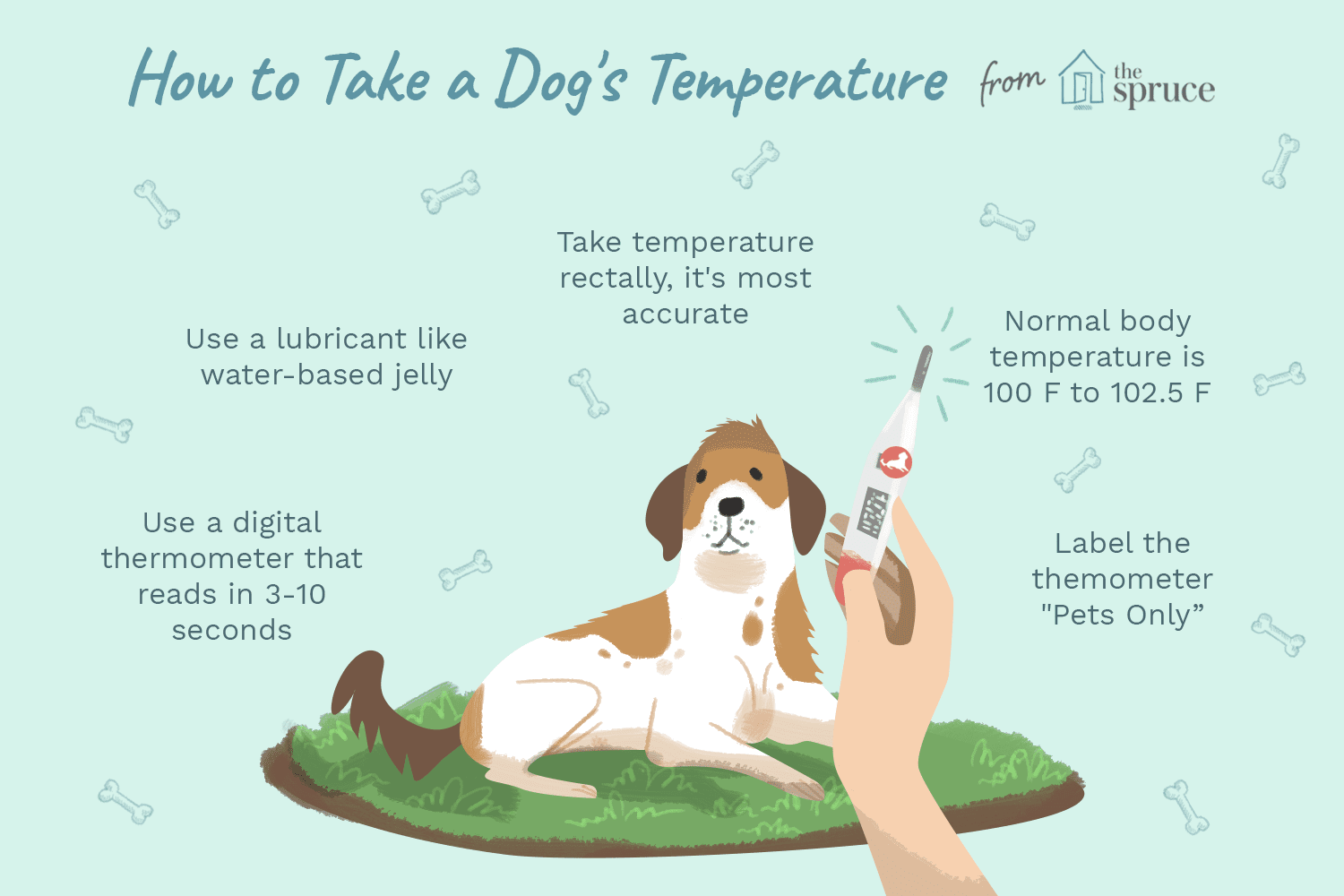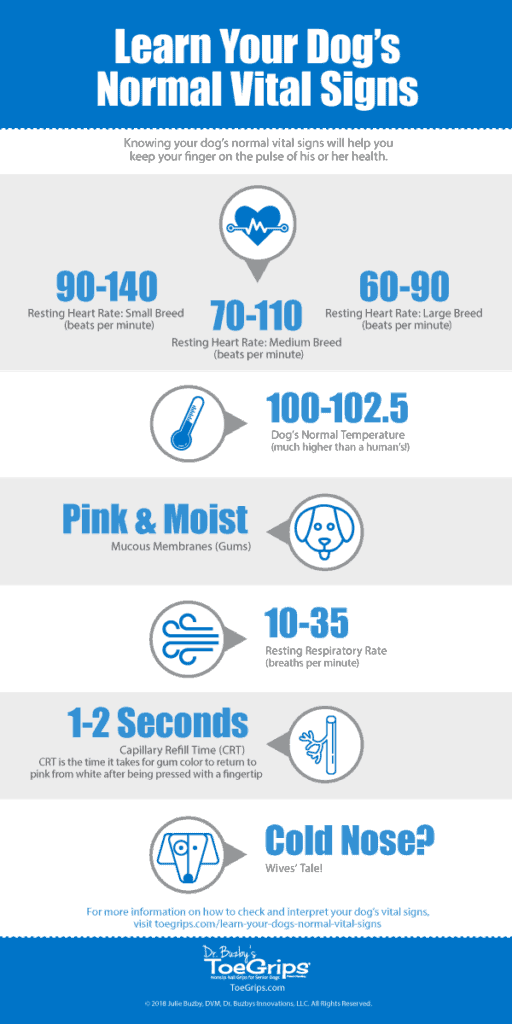Key Takeaways:
- Knowing your dog's normal body temperature range is important for monitoring their health.
- The most accurate way to check your dog's body temperature is rectally using a digital thermometer.
- A normal dog's body temperature ranges between 99.5°F and 102.5°F (37.5°C and 39.2°C).
- An elevated body temperature can indicate fever or underlying health issues, while a low body temperature may be a sign of hypothermia or illness.
- If you suspect your dog has an abnormal body temperature, consult with a veterinarian for proper diagnosis and treatment.
Are you a proud dog owner? If so, then understanding how to check your dog's body temperature is an essential skill that can greatly benefit both you and your furry friend. Just like humans, dogs can experience fluctuations in their body temperature, which can be indicative of underlying health issues. By learning how to monitor your dog's temperature, you can ensure their well-being and potentially catch any potential problems early on. In fact, did you know that a normal dog's body temperature ranges between 99.5°F and 102.5°F? So, whether you're concerned about your dog's health or simply want to be prepared for any situation, let's dive into the world of checking your dog's body temperature together. Get ready to become a pro at keeping your canine companion happy and healthy!
Why is it important to check your dog's body temperature?
Checking your dog's body temperature is important because it can help you monitor their overall health and detect any signs of illness or infection. Dogs cannot tell us when they are feeling unwell, so monitoring their body temperature is one way to assess their well-being. By regularly checking your dog's temperature, you can catch any potential health issues early on and seek veterinary care if needed.
Additionally, knowing your dog's normal body temperature can help you determine if they are experiencing a fever. A fever is often a sign that the body is fighting off an infection or inflammation. Monitoring your dog's temperature can give you valuable information about their immune system and help guide decisions about treatment.
Benefits of checking your dog's body temperature:
- Early detection of illness
- Prompt veterinary care
- Assessment of immune system function
- Better understanding of overall health
Taking proactive steps for your dog's well-being:
Your furry friend relies on you to take care of them, and checking their body temperature is just one way to ensure their well-being. By regularly monitoring their temperature, you can catch any potential health issues early on and provide the necessary care and treatment they need. It's always better to be proactive when it comes to your pet's health!
Signs that may indicate your dog has a fever
Dogs cannot tell us when they have a fever, but there are some signs that may indicate they are running a high temperature. If you notice any of these signs in your furry friend, it may be worth checking their body temperature:
- Excessive panting
- Lethargy or lack of energy
- Loss of appetite
- Shivering or trembling
- Warm or hot ears and paws
- Coughing or sneezing
- Nasal discharge
If your dog is displaying any of these signs, it's important to monitor their body temperature to determine if they have a fever. Remember that these signs can also be indicative of other health issues, so consulting with a veterinarian is always recommended.
Common signs of fever in dogs:
- Panting excessively
- Lack of energy and enthusiasm
- Decreased appetite
- Shivering or trembling
- Elevated body temperature (above normal range)
When to consult a veterinarian:
If you notice any combination of the above signs in your dog, it's best to consult with a veterinarian. They will be able to assess your dog's overall health and determine the appropriate course of action. Remember, early detection and treatment can lead to better outcomes for your furry friend!
How to safely measure your dog's body temperature at home
Taking your dog's temperature at home is a simple process that can be done safely with the right tools and technique. Here are the steps to follow:
- Gather the necessary supplies: You will need a digital rectal thermometer specifically designed for pets, lubricating jelly, and disposable gloves.Prepare your dog: Find a quiet and comfortable area where you can safely restrain your dog. It may be helpful to have another person assist you in holding your dog still.
- Put on disposable gloves: Wearing gloves will help maintain hygiene and prevent the spread of any potential infections.
- Lubricate the thermometer: Apply a small amount of lubricating jelly to the tip of the thermometer to make it easier and more comfortable to insert.
- Lift your dog's tail: Gently lift your dog's tail and expose their rectum. Be gentle and take care not to cause any discomfort or injury.
- Insert the thermometer: Slowly and gently insert the lubricated thermometer into your dog's rectum, about 1-2 inches. Hold it in place for around one minute or until you hear a beep, indicating that it has finished reading the temperature.
- Remove the thermometer: Carefully remove the thermometer from your dog's rectum, taking care not to touch any surfaces with it.
- Record the temperature: Take note of the reading on the thermometer and record it for future reference. It's helpful to keep a log of your dog's temperatures over time.
- Clean and disinfect: Clean the thermometer with soap and water or disinfectant wipes before storing it for future use.
Remember, if you are uncomfortable or unsure about measuring your dog's temperature at home, consult with a veterinarian who can guide you through the process or perform it for you.
Tips for measuring your dog's body temperature:
- Stay calm and gentle during the process to avoid causing stress or discomfort to your pet.
- Use plenty of lubrication on the thermometer to ensure smooth insertion and removal.
- Keep an eye out for any signs of distress or pain in your dog and stop immediately if they appear uncomfortable.
- Practice proper hygiene by wearing gloves and cleaning the thermometer before and after each use.
Consulting with a veterinarian:
If you are unsure about measuring your dog's temperature at home, it's always best to consult with a veterinarian. They can provide guidance, demonstrate the proper technique, or perform the measurement for you. Your pet's health and comfort should always be the top priority!
Normal range of body temperature for dogs
The normal range of body temperature for dogs can vary slightly depending on their breed, size, age, and activity level. However, as a general guideline, the normal body temperature for most dogs falls within the range of 99.5°F to 102.5°F (37.5°C to 39.2°C).
It's important to note that individual dogs may have slightly different baseline temperatures within this range. It is recommended to measure your dog's temperature when they are healthy and relaxed to establish their personal normal range.
Factors that can influence body temperature in dogs:
- Breed: Some breeds may naturally have higher or lower body temperatures than others.
- Age: Puppies and older dogs may have slightly higher baseline temperatures compared to adult dogs.
- Activity level: Physical exertion or excitement can temporarily increase a dog's body temperature.
- Environment: Extreme weather conditions can affect a dog's body temperature.
When to be concerned:
If your dog's body temperature consistently falls outside the normal range or if they display signs of illness along with an abnormal temperature reading, it is recommended to consult with a veterinarian. They can assess your dog's overall health and determine if any further action is necessary.
Steps to take if your dog's body temperature is too high or too low
If you find that your dog's body temperature is either too high or too low, it's important to take appropriate steps to address the issue. Here are some general guidelines:
If your dog has a fever (high body temperature):
- Monitor their temperature: Continue monitoring your dog's temperature regularly to track any changes.
- Provide comfort and rest: Ensure your dog has a quiet and comfortable space to rest and recover.
- Offer plenty of water: Keep your dog hydrated by providing fresh water at all times.
- Contact a veterinarian: If the fever persists or if your dog displays other concerning symptoms, it's best to consult with a veterinarian for further guidance and potential treatment options.
Possible causes of fever in dogs:
- Infection
- Inflammation
- Autoimmune disorders
- Allergic reactions
- Tumors or cancer
If your dog has a low body temperature:
- Warm them up: Move your dog to a warm environment, such as indoors or near a heat source. You can also provide blankets or warm towels for added insulation.Contact a veterinarian: If your dog's body temperature remains low despite warming efforts, it may indicate an underlying health issue. Contacting a veterinarian is recommended for further evaluation and treatment.Avoid direct heat sources: While it's important to warm your dog, avoid placing them directly in front of heaters or using heating pads without proper supervision. Excessive heat can lead to burns or other injuries.
Possible causes of low body temperature in dogs:
- Hypothermia
- Exposure to cold weather
- Underlying health conditions
- Shock or trauma
- Endocrine disorders
Remember, these steps are general guidelines, and it's always best to consult with a veterinarian for personalized advice based on your dog's specific situation. They will be able to provide the most appropriate recommendations and treatment options.
Precautions and tips for checking your dog's body temperature
When checking your dog's body temperature at home, it's essential to take certain precautions to ensure their safety and accuracy of the measurement. Here are some important tips to keep in mind:
Tips for safe temperature measurement:
- Use a digital rectal thermometer designed specifically for pets.Lubricate the thermometer with jelly or lubricant before insertion.Avoid inserting the thermometer too deeply or forcefully.Maintain a gentle and calm approach throughout the process.If you're uncomfortable or unsure about measuring your dog's temperature, consult with a veterinarian.Clean and disinfect the thermometer before and after each use.Keep records of your dog's temperatures over time for reference.If your dog shows signs of distress or discomfort during measurement, stop immediately and consult with a veterinarian.
Additional considerations:
It's important to remember that measuring your dog's body temperature is just one part of assessing their overall health. If you have any concerns about your dog's well-being or notice any other signs of illness, it's always best to consult with a veterinarian for a comprehensive evaluation and appropriate care.
Your pet relies on you for their health and well-being, so taking the time to monitor their body temperature and seek veterinary care when needed is an essential part of responsible pet ownership!
In conclusion, it is important for dog owners to regularly check their dogs' body temperature to ensure their health and well-being. By using a rectal thermometer and monitoring any signs of fever or abnormal behavior, we can take necessary steps to keep our furry friends happy and healthy.
How can you tell if a dog has a fever without a thermometer?
Check your dog's ears and paws for signs of fever. If your dog has a fever, his ears and paws will feel very hot. You can determine his temperature by comparing the warmth of his ears and paws to your own cheeks and the back of your hands. If his ears and paws are warmer than yours, he may have a fever. Typically, healthy dogs have a slightly higher body temperature than humans.
What is a normal temp for a dog?
The typical body temperature for dogs and cats is between 101.0 to 102.5°F (38.3 to 39.2°C). However, some individuals may have slightly higher or lower baseline temperatures. If your pet's temperature goes above 104°F (40.0°C) or below 99°F (37.2°C), it is recommended to consult a veterinarian.
Can I take my dog's temperature under his arm?
Temperature can be measured by using thermometers in different parts of the body, such as the mouth, ear, underarm, and rectum.
Can you tell if a dog has a fever by touch?
Determining if your dog has a fever can be challenging. Many people believe that you can tell if a dog has a fever by feeling their nose to see if it is warm and dry. However, dogs naturally have a higher body temperature than humans. The most accurate method to determine if your pet has a fever is by taking their body temperature.
Can you take a dog's temperature with a human forehead thermometer?
In order to take temperatures with less intrusion, you can use infrared thermometers such as forehead readers that are commonly found in households. However, it is important to note that the accuracy of the results may not be as reliable.
How do you bring a dog's fever down?
In order to lower a pet's fever, which is considered to be 103 degrees or higher, start by applying cool water to their paws and ears. This can be done using a damp towel or cloth, or by using a cooling vest made for dogs. Keep an eye on their temperature and once it goes below 103, you can stop applying the water. You can also try to encourage them to drink a small amount of water.

















